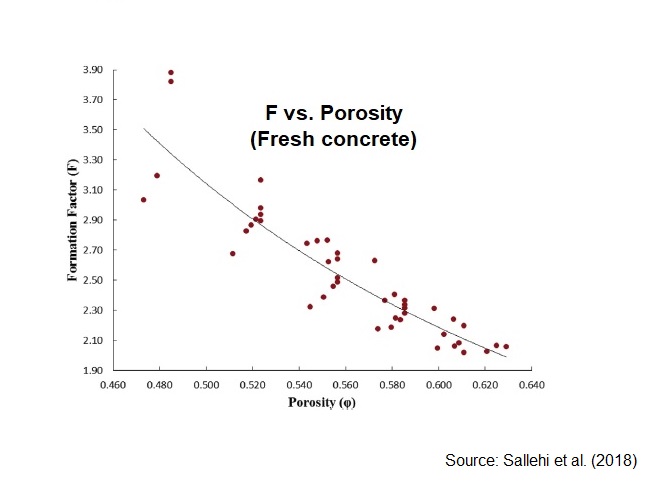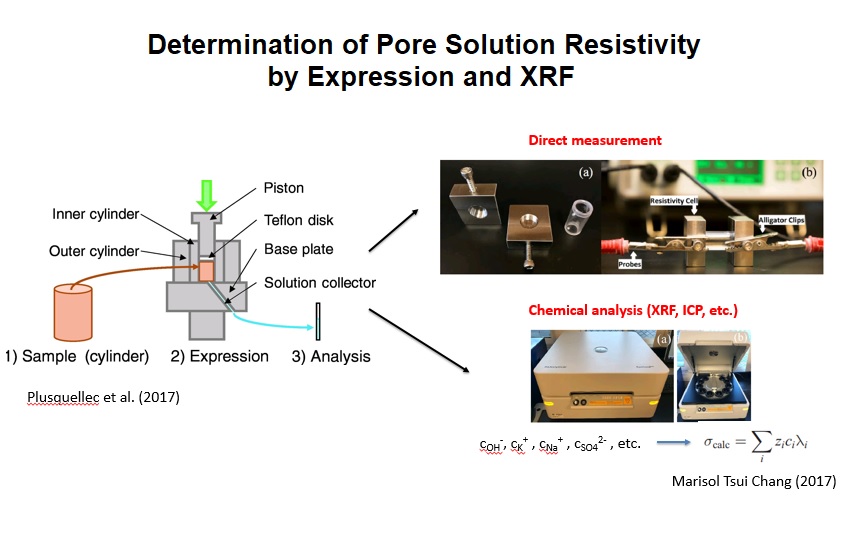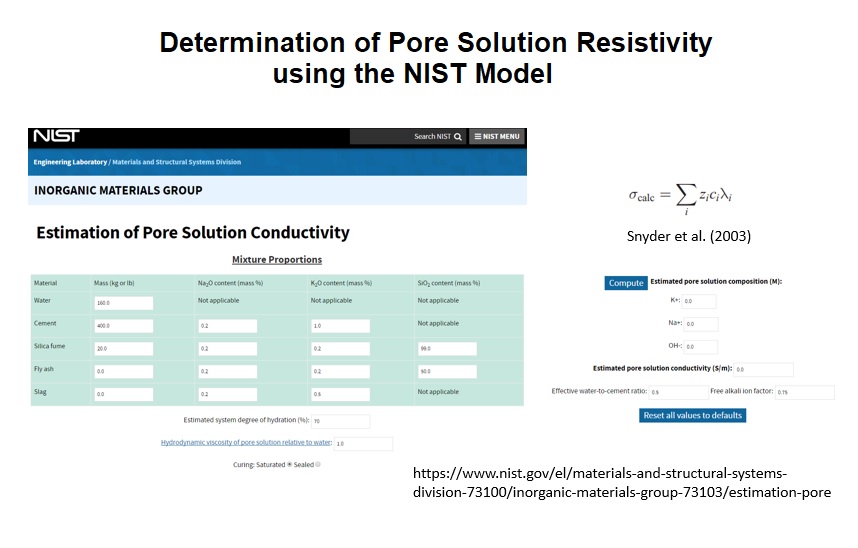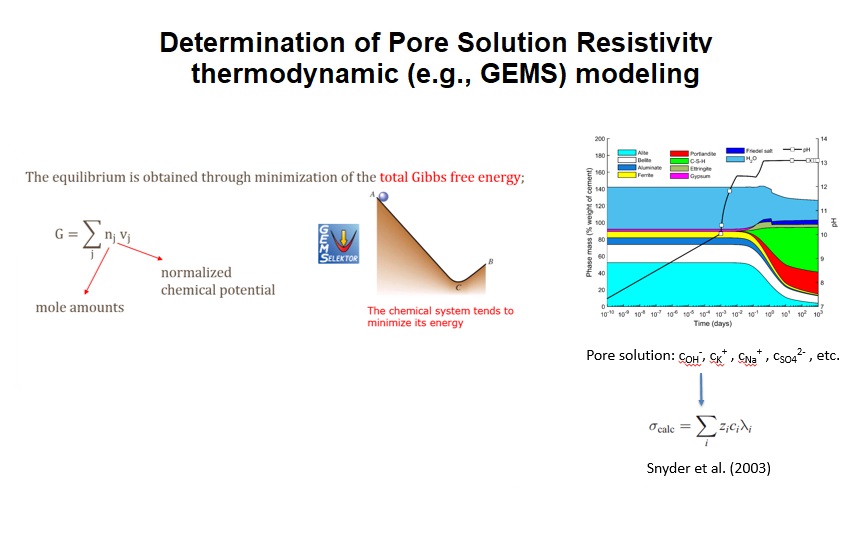Porosity in porous materials such as rocks, soils, or concrete is defined as the volumetric ratio of air voids and water to the total material. Electrical resistivity of porous materials such as sandstones has been investigated by many researchers as early as early 1900s. Fricke et al. (1931) considered sandstones saturated with water as a two-component system composed of a non-conductive solid matrix and a conductive water phase. Since the electrical resistivity of solid particles is several orders larger than that of conductive water in sandstones, conductivity (or resistivity) of the sandstone was assumed to be mainly governed by the conductivity (or resistivity) of the water phase. A parameter, called formation factor (F), was defined as the ratio of electrical resistivity of saturated sandstone to that of water contained in its pores.

Different empirical equations were proposed by researchers to establish a relationship between formation factor and volumetric fraction of conductive component (such as water in sandstones, or pore solution in concrete) defined mostly in terms of porosity. The most widely accepted form of this relationship was proposed by Archie in 1942, as shown below, where m is a factor that depends on the type of the porous medium.

Archie's law has been successfully applied to hardened cement-based materials such as concrete. It has been shown in past research that electrical properties of hardened concrete, such as its electrical resistivity or formation factor, can be used to predict durability properties of concrete. Concrete is a porous materials with pores with sizes ranging from less than 10 nm (gel pores) to 1-10 mm (entrained and entrapped air), and capillary pores in between, as shown in the figure. One advantage of this approach is that electrical properties of concrete can be determined rapidly and related to other more time consuming and expensive tests such as rapid chloride penetration test (RCPT).

In recent years, formation factor has been correlated with performance indicators such as RCPT, chloride transport properties, permeability, and matrix saturation point of hardened concrete. These developments allowed formation factor to become a candidate for a performance index for concrete durability, similar to compressive strength of concrete as a performance index for its mechanical properties. This approach is expected to change the way we specify concrete, and perform quality control and quality assurance tests.
Calculation of the formation factor of concrete is based on two parameters: (1) electrical resistivity of bulk concrete, (2) electrical resistivity of pore solution. The bulk resistivity of concrete can be measured using standardized procedures (e.g. ASTM C1760; see the Videos section for a demonstration). The resistivuty of concrete pore solution can be measured either by analyzing the expressed solution from concrete, or using theoretical approaches such as the NIST model or thermodynamic calculations yto detemrine the ionic composition of the pore solution and calculating its resistivity (see the Calculators section).



